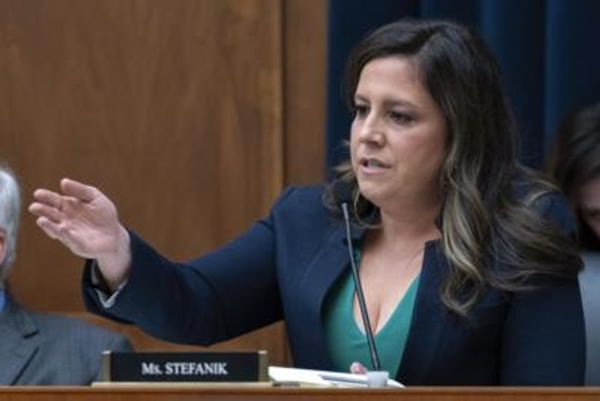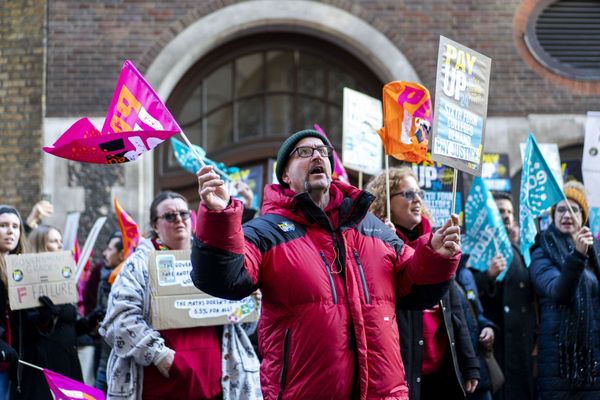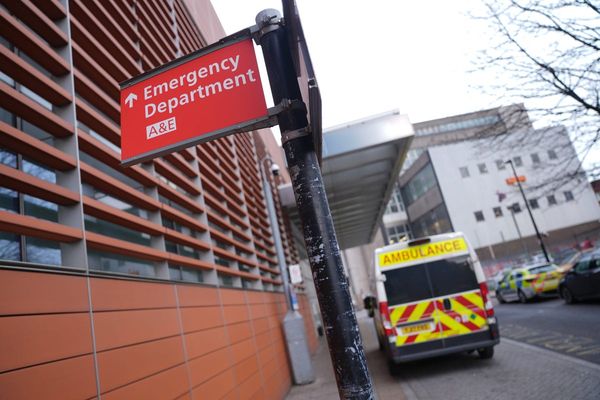
The U.S. Postal Service is now widely suspected of carrying out the president’s desire to suppress voting in this year’s election. But those fears understate the threat that changes the U. S. Postal Service now poses to the American public. Hardly anyone in the federal government seems to have given consideration to the health of more than 200 million Americans who depend upon the Postal Service for delivery of medicines, veterans’ assistance benefits, Social Security checks, food subsidies, child support, or deliveries of basic goods and food—dependencies that have been magnified by COVID-19. It is a medical crisis caused by what should be a political scandal: President Donald Trump’s administration’s quiet attempt to make mail delivery a private, rather than public, service.
The drama that unfolded in July and August, prompting passage of an emergency House bill, and its predictable blockage in the Republican-controlled Senate amid a threatened presidential veto, stemmed from a series of actions taken by a new postmaster general. But the plan that would deprive rural Americans, individuals without Internet access, veterans, and millions of other citizens of their rightful postal deliveries was hatched long before he held office.
In June 2018, the Executive Office of the President released the Trump administration’s 132-page master plan, “Delivering Government Solutions in the 21st Century: Reform Plan and Reorganization Recommendations.” Though little noticed outside of the White House, the plan represented marching orders for the appointed leaders of every government agency, delineating what services and personnel should be eliminated and how the missions of the respective departments ought to be changed. The plan was careful to note which fundamental alterations in mission might require congressional approval, highlighting changes an agency director, cabinet member, or the president himself could order without facing legislative roadblocks or statute limitations. Page 68 of the plan starts a section dedicated to privatizing the United States Postal Service, noting, “A privatized Postal Service would have a substantially lower cost structure, be able to adapt to changing customer needs and make business decisions free from political interference, and have access to private capital markets to fund operational improvements without burdening taxpayers .”
The plan noted that between 2001 and 2017, first-class mail use fell by 40 percent, though junk mail was stable. No mention was made in the plan of citizens’ dependence on the mail for payments, medicines, small-business supplies, rural deliveries, Social Security checks, tax rebates, pensions, Medicare reimbursements, food and welfare subsidies, and the like.
It should come as no surprise, then, that newly appointed Postmaster General Louis DeJoy set forth to execute the plan shortly after taking office on June 16, with cost savings and privatization at the forefront of his mind. DeJoy replaced Megan Brennan, the Nation’s 74th postmaster general and its only female leader, who took office in 2015 after being appointed by then President Barack Obama. Her departure in January left a power struggle between the agency’s Board of Governors and Treasury Secretary Steve Mnuchin, who was willing to extend a $10 billion line of credit to tide the financially strapped agency over, but only with tough preconditions and mandatory payback. The Board of Governors recoiled, unable to see how the Postal Service would ever generate sufficient surplus revenues to pay back the unprecedented $10 billion loan, and opposed to Mnuchin’s insistence on personally overseeing privatization of the mail service, in line with the White House plan. Turbulence followed, and the board’s vice chairman, David C. Williams, resigned in protest days before DeJoy’s selection, saying before Congress months later that the Mnuchin scheme marked “the end of the Postal Service.”
Regardless of any impact implementation of the plan might have on the Nov. 3 national elections, the disruption of normal postal services in an effort to reduce costs and transition the agency from a public institution to a private company—with or without a $10 billion loan from the Treasury—proceeded with haste once DeJoy was in the postmaster general’s seat. Days after taking the position, he prepared to remove 671 automatic mail-sorting machines. Many of these machines had been replaced, at great cost, after the 2001 anthrax mailings led to widespread contamination of sorters in Washington, D.C., New Jersey, and New York, killing two postal workers .
In addition, social media in early August was rife with images of mothballed blue mailboxes, and teams removing the boxes were photographed in several states. Prior to DeJoy’s appointment, there were about 142,000 mailboxes scattered across the United States. Between 2011 and 2017, some 14,000 mailboxes were decommissioned because of their low use rates, and it is unclear whether the photographed removals represent routine displacement or an acceleration ordered by the new postmaster general.
Regardless of motivations and the scope of decommissionings, according to DeJoy’s testimony on Aug. 21 to the Senate Homeland Security and Governmental Affairs Committee, none of these steps were anticipated by a thorough, or even scanty, review of citizen needs that might go unmet or delayed. New Hampshire Sen. Maggie Hassan, a Democrat, asked DeJoy, “Will you ensure that any further changes that you make to postal operations do not delay access to medications and other necessities? Yes or no.”
“Yes, Senator,” DeJoy responded, “and I look forward to working with you on legislation to help this type of service, not reach into the future.”
This is startling, not only because it illustrates a flagrant lack of concern for the American people who are dependent on the Postal Service for life-sustaining funding, food payments, and medicines. Because the steps DeJoy zealously took were based on a plan that had been in place for two years, it would have seemed appropriate, if not a moral responsibility, for the postmaster general to have prepared and examined such data before interrupting services, allowing cost-saving steps to unfold without literally imperiling human lives.
It’s possible that such assessments were done before DeJoy’s arrival, but mothballed. We don’t know, because on Aug. 7 DeJoy executed what’s been dubbed the “Friday Night Massacre,” firing or displacing 23 top postal service executives, thereby eliminating many of the high-level experts that might have known how many Americans, in which parts of the country, were completely dependent upon the Postal Service for their health, finances and well-being. The mass firing came the same day that nine lawmakers wrote to the Postal Service inspector general, demanding to know what DeJoy was up to. “What was the rationale for these changes,” the lawmakers asked, and, “What analyses of their impact did he or other Postal Service officials conduct before putting them in place?”
On Aug. 19, Sens. Elizabeth Warren and Bob Casey, both Democrats, wrote to five major prescription management companies, requesting details on medicine deliveries and disruptions. “Millions of Americans with diabetes, high blood pressure and heart disease, asthma, and other chronic conditions, illnesses or health care needs rely on the USPS for delivery of their prescription drugs and are at grave risks if President Trump’s efforts to degrade mail service results in delays and disruptions,” they wrote. They are awaiting answers from the companies. House Democrats have done the same, garnering evidence that thousands of their constituents are not receiving their prescriptions and are unable to obtain life-sustaining medications from any other means.
Facing withering criticism from political leaders, including many Republicans, the Postal Service hired a crisis management firm and announced that all mailbox and sorting machine removal would cease. However, DeJoy told senators, the automatic sorting machines that had been already removed were dismantled and sold for scrap metal. They will not be replaced. Though old and broken machines are routinely scraped, the staggering number DeJoy had slated for removal represents a toll more than 80 percent above any previous months of Postal Service operations. According to CNN, email from the postmaster general’s office instructed post offices that any still-intact sorting machines that had been removed from use could not be restored to their prior positions, or even plugged into electrical outlets.
Two weeks later, under questioning from members of the Senate, DeJoy was unable to answer questions about citizens’ livelihoods imperiled by mail disruptions. And he was still unable to do so after three weeks, when testifying on Aug. 24 before the House Committee on Oversight and Reform, when he admitted to not knowing how many veterans depend on prescriptions by mail. (The answer is 330,000 veterans receive medicine every single day.)
The essential fact is that Americans are dependent on the Postal Service for their basic medical well-being—and have become increasingly so for decades. There are several reasons why that’s the case—and why the Postal Service’s disruptions are so potentially deadly.
First, insurance companies that cover some or all of the costs of prescription medicines have pressured consumers to abandon local pharmacies in favor of warehoused bulk-purchasing operations that mail drugs via the U.S. Postal Service. For example, OptumRx mails half a billion prescription drugs annually on behalf of various insurance providers. Many of these medicines, such as hormones, insulin, and eyedrops, are temperature-sensitive, and are mailed in coolers that require on-time delivery to ensure the drugs contained are not only active, but have not deteriorated into a potentially dangerous form under inappropriate heat. Approximately 1 in 3 birth control prescriptions are filled by mail, particularly to parts of the country not served by Planned Parenthood.
Mailed medication deliveries are featured in both private and public insurance plans. According to the House Energy and Commerce Committee, the Postal Service delivered 1.2 billion prescriptions in 2019.
Second, other agencies in the U.S. government have sought to similarly reduce their costs by purchasing in bulk, warehousing, and then directly mailing medicines. Leading the government agency list is the Department of Veterans Affairs.
Third, health requires food and housing. Some 21 percent of U.S. households were dependent on checks or vouchers for food, medical care, and housing in 2012, from 79 different programs. These include welfare payments, meal assistance, and Medicaid supplements. In 2019 (before this year’s massive surge in unemployment) 64,699,741 individuals were enrolled in Medicaid, 18 percent of adults used food assistance programs, and 39 percent of children were enrolled in one or more federal programs that involved mailed checks or paperwork. Since COVID-19 swept the United States, the ranks of the unemployed have increased, with millions more filing for unemployment benefits, Coronavirus Aid, Relief, and Economic Security Act stimulus checks, and supplemental weekly payments—most delivered by mail.
Fourth, most physicians’ offices, hospitals, and health insurance companies send medical bills and require on-time receipt of payments from health consumers via mail. If mailed payments fail to arrive on time, the individuals may be levied fines, be reported to various third-party debt collectors, or even face cancellation of insurance.
Fifth, the COVID-19 pandemic and lockdowns have increased all mail use, including for pharmacy and medical deliveries.
According to a mid-August survey, 1 in 5 Americans expected a medicine delivery during the past week, and one-quarter of those deliveries were either delayed or never showed up. One online pharmacy, Honeybee Health, said mail delays were negligible before DeJoy started the Postal Service changes in July. Now, at least 5 percent of Honeybee’s medicine deliveries are lost.
There are a host of groups whose health and welfare may have already been inconvenienced, or imperiled, by the disruptions executed during DeJoy’s first two months in office.
Start with veterans. Eighty percent of prescriptions and medical supplies for veterans are mailed using the Postal Service. Some 5 percent is mailed directly to veterans, primarily those located in rural areas. The remainder are mailed by the Department of Veterans Affairs (VA) to local pharmacies. A veterans’ advocacy group has said that, on average, medications from the VA have been delayed by about 25 percent this year. In a thread on Twitter, the group VoteVets denounced the postmaster general’s actions, saying more than 300,000 prescription drug deliveries are mailed to veterans every day. On Aug. 13, a group of senators notified DeJoy that medicines usually shipped to vets in three to five days are “often taking weeks to be delivered and causing veterans to miss doses of vital medications.”
Beyond veterans, there are tens of millions who rely on the mail for medicine. About 20 percent of Americans over the age of 40 get their prescriptions delivered by mail. The behemoth drugstore chain CVS delivers 15 percent of all its prescriptions via the Postal Service.
Americans living in rural areas are especially vulnerable. “An even greater share of the rural population relies on mail order prescriptions since so many pharmacies in rural communities have shut down,” according to a recent report by the Institute for Policy Studies, which has exhaustively studied rural citizens’ dependence on the U.S. Postal Service and lack of alternative access to high-speed broadband Internet service. According to Federal Communications Commission data, about 14.5 million Americans can’t pay bills or receive Medicare, Social Security, Medicaid, or other payments digitally because they lack access to high speed Internet. Moreover, the report said, paying far more for Amazon, FedEx, the United Parcel Service, and other private delivery services still doesn’t guarantee on-time mailing in rural parts of the country, because last-mile delivery in rural areas is often handled by the U.S. Postal Service.
Senior citizens face heightened dangers, too. One out of every 5 U.S. senior citizens lives in a rural area; 4.7 million of them are veterans. More than half a million of those seniors count on the U.S. Postal Service to deliver their monthly Social Security checks, which are used to cover mortgages, buy food, and meet medicine co-payments. And according to AARP, 75 percent of adults ages 50 and older regularly take a prescription medication; for those 65 and older, the figure is even higher. More than 80 percent of those adults take more than one such medication, “and over four in ten … take four or more.” Medicare also pushes people into drug plans that involve just-in-time Postal Service mailing.
This is just a cursory survey of groups of Americans whose very livelihoods and survival depend upon timely, routine postal delivery. It’s the sort of list that the Postal Service should have scrutinized before taking any disruptive actions, ensuring that none of these essential first-class deliveries would be slowed, rendered useless, or lost. That it has apparently failed to do so is reprehensible.
For their part, leading Democrats have focused on the implications of sweeping Postal Service changes on the November elections; none have publicly noted that the overall privatization scheme dates to June 2018. They have repeatedly missed opportunities to question the larger motivations behind DeJoy and Mnuchin’s reforms, or to take a broader view of the likely impact on the health and well-being of Americans. In contrast, Republicans have repeatedly complained about the Postal Service’s debt and its failure to compete with Amazon and FedEx.
It’s not like there wasn’t time to hold the Trump administration accountable. This scheme to privatize the Postal Service has been on paper in the White House for more than two years and was reviewed by the Congressional Research Service. Two years was plenty of time for at least a cursory look at the lives likely to be harmed, children likely to go hungry, and rents likely to go unpaid if the mail doesn’t arrive on time. That such a review was apparently never undertaken, or was ignored by the postmaster general, can only prove to the American people that the cost efficiency of the Postal Service is far more important to its leadership than the survival of citizens who rely upon it.







